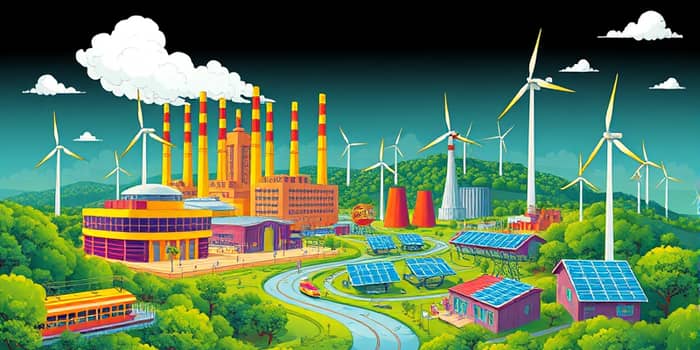
Environmental targets are no longer peripheral considerations—they are at the heart of a global transformation of how industries operate, innovate, and grow. Governments and businesses alike face urgent climate and economic imperatives that demand a complete reimagining of traditional industrial policies, making sustainability a cornerstone of future prosperity.
Traditional industrial policy was shaped by the priorities of the past: rapid growth, mass production, and minimal regulation. Yet as climate risks intensify and international commitments solidify, policymakers recognize that a model built on unchecked emissions and resource exploitation is no longer viable. The pivot toward net zero targets, driven by the Paris Agreement and national commitments, underscores the need for green and inclusive growth strategies that balance economic development with environmental stewardship.
Reforming industrial policy means questioning long-held assumptions and creating new frameworks that reward sustainable practices. It involves aligning incentives, regulations, and investments so that clean industries flourish, while high-polluting sectors are guided toward lower-impact alternatives or phased out altogether.
A successful green industrial policy framework typically rests on three core pillars. These pillars guide governments in designing measures that accelerate decarbonization, stimulate innovation, and ensure that the benefits of transition are shared equitably.
Underpinning these pillars is the recognition that industrial policy must be dynamic and responsive, learning from past missteps and adapting as technologies evolve.
Governments deploy a rich toolkit to drive the industrial transition. From market-based instruments to direct investment, these measures help steer both private and public actors toward low-carbon pathways.
Initiatives like the U.S. Inflation Reduction Act (IRA) illustrate how powerful these tools can be: by offering generous tax credits and grants, the IRA is expected to unlock $1.2 trillion in green investments over the coming decade. Complementary measures—such as clean electricity standards and carbon fees—can close the gap between current policies and the deeper cuts required to meet 2030 targets.
Ensuring a just transition and environmental justice is equally crucial. Policymakers are increasingly emphasizing support for workers and communities affected by the shift away from fossil fuels, investing in retraining programs, and directing resources to disadvantaged areas.
Quantitative data lend clarity to the transformative potential of green industrial policy. By combining ambitious targets with robust policy mixes, countries and regions demonstrate both environmental and economic gains.
Beyond headline targets, green industrial policies often deliver co-benefits such as job creation in renewable sectors, improved public health, and enhanced supply chain resilience. For example, investments in electric vehicle manufacturing not only reduce transportation emissions but also stimulate local employment and technological leadership.
No single country can achieve deep decarbonization in isolation. Advanced economies are called upon to support green industrialization in developing nations through technology transfer, climate finance, and capacity-building initiatives. This collaboration is critical to aligning global efforts with the Sustainable Development Goals, ensuring that emerging economies can leapfrog to cleaner pathways without repeating the pollution-intensive stages of the Industrial Revolution.
At the same time, dynamic policy mixes are evolving. In many regions, green industrial policy leads the way, laying the groundwork for later, stricter environmental regulations. When industries and stakeholders build momentum around sustainable practices, they form coalitions that sustain more ambitious climate action.
While the potential of green industrial policy is immense, challenges remain. Policymakers must guard against unintended consequences, such as uneven regional development or market distortions. Continuous monitoring, stakeholder engagement, and policy iteration are essential to maintain alignment with long-term climate and economic objectives.
Other key lessons include:
Ultimately, environmental targets are more than regulatory hurdles—they are powerful catalysts for a new era of industrial policy. By embracing this opportunity, societies can unlock sustainable growth, create resilient communities, and safeguard the planet for future generations.
References













